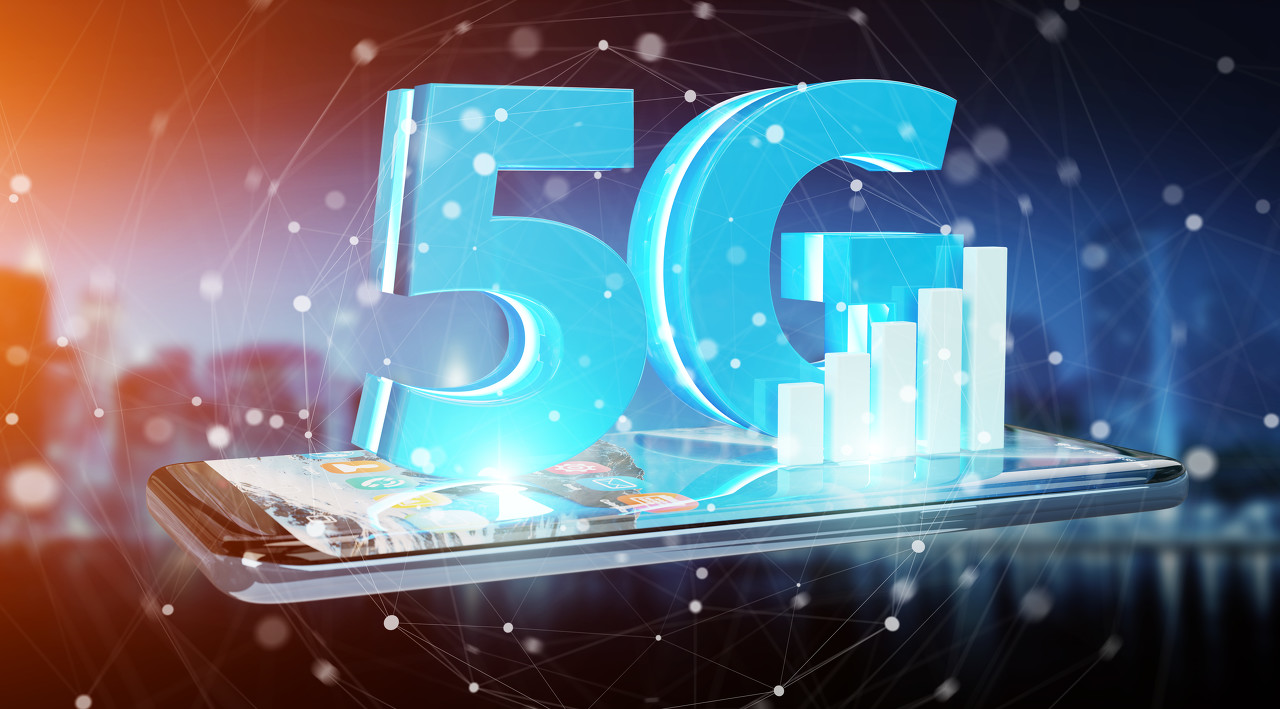Wi-Fi and 5G will coexist, but true convergence is a long way off

Wi-Fi 6 and 5G are different technologies, but represent the latest generation of technologies within their respective spheres of influence, both have huge market prospects and can coexist.

5G seems to be overtaking Wi-Fi 6. However, both will play an important role in the future of wireless connectivity. Unlike past generations of wireless networks, 5G cellular and Wi-Fi6 networks will enable seamless interconnection and are widely seen as replacement technologies in the wireless ecosystem. Standards bodies and wireless alliances continue to propose solutions to the remaining technical challenges of seamless interconnection.
Previously, network executives reported that their businesses were adopting both technologies for wireless interconnection plans, suggesting they prefer Wi-Fi 6 indoors, campuses, and fixed network environments to outdoor, off-campus, and mobile networks. 5G is used in the environment. It makes sense to adopt these techniques in parallel. Nearly all expect their organizations to use both Wi-Fi 6 and 5G within the next two to three years.
Over the next three years, these organizations are expected to divide wireless spending fairly between Wi-Fi (48%) and cellular technology (52%), according to Deloitte research.
The converged use of 5G and Wi-Fi 6 is also evident when looking at the individual countries. While Wi-Fi 6 uses unlicensed spectrum (and, therefore, is cheaper to enter), 5G plans typically require government regulators to auction or allocate spectrum suitable for 5G services.
In an ideal environment, Wi-Fi and cellular networks would converge, and the terminal itself would automatically select a network based on predetermined policies such as cost or performance.
There have been some early rumors on this front. The Wireless Broadband Alliance (WBA) and the Next Generation Mobile Networks Alliance (NGMN) have released a report in 2021 driving the future convergence between 5G and Wi-Fi. Likewise, the IEEE, sponsored by the Wi-Fi Alliance, has been discussing potential avenues for convergence for years.
So far, however, true convergence appears to be a long way off.
Wi-Fi and 5G market prospects are broad, how to choose deployment?
In the next 2-3 years, my country, the European Union and other regions are ready to give 5G and Wi-Fi6 the highest priority. Relevant organizations or institutions are planning to make significant investments in hardware/equipment, software and installation, and operational services. Deloitte estimates that China's 5G commercialization will be accelerated again, and the 5G adoption rate will be as high as 70%, which is at the world's leading level. The data shows that the proportion of domestic Wi-Fi6 deployment and pilot has also reached 72%. It can be seen that the progress of these two technologies tends to be similar.
In order to make an investment choice in deploying 5G or Wi-Fi options, the important role of Wi-Fi in providing high-speed, reliable and low-cost wireless broadband connectivity should be recognized. With huge potential advantages, 5G or Wi-Fi is expected to cooperate, not compete, in AR/VR.
As of now, about 26% of organizations surveyed by Deloitte are preparing to use 5G and Wi-Fi 6 in different ways, such as acquiring equipment/infrastructure, identifying potential providers, and forming partnerships. While 39 percent of organizations report that they have started 5G pilots, about 63 percent have already experimented with Wi-Fi 6.
Wi-Fi carries more than half of today's mobile data traffic and will continue to replace cellular LTE or 5G networks for mission-critical operations. Wi-Fi 6 and 5G are key connectivity technologies for many next-generation connectivity scenarios. The future of digitally connected cars, for example, will depend on the combination of cellular data services and in-vehicle Wi-Fi capabilities.
Connected cars may use in-vehicle Wi-Fi to connect passengers and stream infotainment services, while the cars themselves may rely on 5G for vehicle-to-vehicle communication with carpoolers, or to stay connected to cloud navigation services while driving on the highway. connect. Wi-Fi and 5G together will accelerate the next-generation connectivity trend, but next-generation use cases may require unique capabilities of one or the other.
In particular, Wi-Fi 6 has a strong set of advantages, and the overall inherent advantages of Wi-Fi, such as affordability, ubiquity, and ease of use, make it the most compelling choice for certain use cases. Three areas where Wi-Fi brings a strong value proposition include indoor networking, Internet of Things (IoT) applications, and dense public deployments.
Wi-Fi will continue to be the primary connectivity technology in home and business environments because it is affordable, easy to maintain and update, and can scale to accommodate multiple access points to serve more users. Indoors, Wi-Fi can accommodate a large number of devices, and technologies including Wi-Fi6 and Wi-Fi6E can provide networks with higher data rates, greater capacity, efficiency and coverage.
Wi-Fi 6 lays the foundation for many current and emerging indoor applications, from streaming HD movies to video conferencing and other business applications that require high bandwidth and low latency. Wi-Fi also provides strong connectivity, capable of penetrating walls. Wi-Fi 6 now includes advanced features and provides enhanced performance for emerging applications such as AR/VR.
In IoT use cases, Wi-Fi has advantages over cellular. Wi-Fi is the technology of choice for connecting users to the Internet today, and it’s an obvious choice when considering IoT technologies that connect devices to the Internet and between devices.
Wi-Fi 6 has strong advantages in delivering high-density wireless services in public environments such as concert venues and stadiums. Wi-Fi provides high-quality connectivity in locations with hundreds or thousands of connected devices, and Wi-Fi 6 helps ensure that each connected device operates at an optimal level. It also offers higher data rates, enabling users with a large number of connections to access the network faster without lag time. In addition, the capacity should not be underestimated.
Where and how users, businesses, and network managers deploy Wi-Fi or 5G may depend on the use case, and Wi-Fi offers clear advantages for indoor networks, IoT applications, and dense public deployments. Wi-Fi is affordable, ubiquitous, and constantly evolving to meet the connectivity needs of today and tomorrow.
How to use Wi-Fi6 to accelerate enterprise innovation and transformation?
Since its launch in 2019, Wi-FiCertified6 has seen rapid adoption, surpassing 50% market share within three years, while Wi-Fi5 only took four years. This accelerated adoption is driven by the need for high-performance Wi-Fi in phones, tablets, and PCs, and its advanced features and capabilities are bringing new opportunities for IoT, service provider deployments, and dense public areas.
Wi-Fi 6 expansion to 6GHz is further attributed to the growing demand, Wi-Fi 6E has generated unprecedented interest among regulators around the world and is widely adopted in product, service provider and enterprise deployments. It is expected that more than 2.3 billion Wi-Fi6 products and 350 million Wi-Fi6E products will enter the market in 2022, and more than 15% of Wi-Fi6 shipments this year will also be Wi-Fi6E.
In 2022, Wi-FiCertified6 adds enhancements to best serve advanced use cases. Wi-Fi6 and Wi-Fi6E are optimally configured to meet today's connectivity needs and support a steady stream of new product and service innovations.
Two years ago, the US opened up the 6GHz band for Wi-Fi. Since then, more than 60 countries in the Americas, EMEA and APAC have or are considering offering the band for Wi-Fi. The Wi-Fi6E ecosystem is rapidly expanding, and its certification helps ensure global interoperability of devices no matter where they are deployed.
For example, some countries, including Brazil, Canada, South Korea, and Saudi Arabia, have provided higher and lower 6GHz frequency bands (5925-7125MHz) for Wi-Fi 6E. By offering the full spectrum, some countries, such as Saudi Arabia, are looking to harness the full potential of Wi-Fi 6E, noting that Wi-Fi is critical to their populations. Other countries have opened up the lower part of the band (5925-6425MHz), and these are ultimately popular, but Wi-Fi 6E and future generations will realize its full potential by using the entire 1200MHz spectrum in the 6GHz band.
The global Wi-Fi6 market size is expected to grow. According to data from a market research firm, Wi-Fi 6 will grow from $11.5 billion in 2022 to $26.2 billion in 2027, with a global market compound annual growth rate of 17.9%. Its main suppliers include Cisco, Intel, Broadcom, NXP, Huawei, Qualcomm, Murata, MediaTek, etc.
These players have employed various growth strategies such as developing partnerships, business expansion, mergers and acquisitions, and new product launches to expand their share of the Wi-Fi 6 market. From 2019 to 2022, developing partnerships and new product launches are the most adopted strategies by major players, which help them innovate their products and expand their customer base.
Wireless Local Area Network (WLAN) technology based on the IEEE802.11 family of standards is one of the most successful wireless communication technologies in the past two decades. It is essentially based on an OFDM access scheme and typically operates on license-exempt frequency bands such as 2.4GHz, 5GHz and 60GHz, which carry a significant portion of the traffic from various devices in today's and future wireless communication networks.
The sixth-generation Wi-Fi (Wi-Fi6) based on the IEEE802.11ax standard represents an increase in its communication efficiency and will also operate on the newly introduced 6GHz spectrum (Wi-Fi6E). In addition, the standardization of the seventh generation (Wi-Fi7) has begun with the goal of achieving extremely high throughput (IEEE802.11be).
Wi-Fi 7 was developed to focus on Wi-Fi's extremely high throughput, which means that it is expected to support up to 30Gbps throughput, about three times that of Wi-Fi 6. In short, Wi-Fi 7 will provide entire venue coverage with range enhancement and higher performance, even in the most demanding environments.
The industry believes that although there are high expectations for the 6GHz spectrum, in the next step, many users may directly bypass Wi-Fi6E and enter Wi-Fi7 enterprise-level products. One reason is that mass production of Wi-Fi 6E will be a challenge. With MediaTek releasing its first Wi-Fi7 chip in the first half of this year, enterprise-grade products are just around the corner.